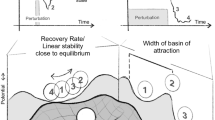Abstract
Numerous researchers are exploring multisensor detection as the principal means of discriminating between fire and nuisance sources. Multisensor detectors can monitor multiple aspects of a wide variety of signatures produced by flaming fires, non-flaming fires, and nuisance sources. This paper describes one program of small- and large-scale experiments that has been conducted using a prototype advanced fire detector with multiple gas sensors. An elementary analysis is applied to demonstrate that spacing guidance can be rationally developed for multiple gas sensors to detect fires of a particular threshold fire size, i.e., heat release rate. Discriminating between flaming fires, non-flaming fires, and nuisance sources could be achieved using either a threshold concentration or CO2 rate-of-rise to identify flaming fires and a CO or CO2 rate-of-rise for non-flaming fires. Time to detection was also compared to commercial smoke detectors, and the reductions in time were noted.
Similar content being viewed by others
References
Hall, J. R., ‘The Latest Statistics on U.S. Home Smoke Detectors,’ Fire Journal, 83:1 (1989), pp. 39–41.
Grosshandler, W. L., ‘A Review of Measurements and Candidate Signatures for Early Fire Detection,’ NISTIR 5555, Gaithersburg, MD, National Institute of Standards and Technology, 1995.
Thuillard, M., ‘New Methods for Reducing the Number of False Alarms in Fire Detection Systems,’ Fire Technology, 30:2 (1994), pp. 250–268.
Luck, H. ‘Remarks on the State of the Art in Automatic Fire Detection,’ Proceedings of the 10th International Conference on Fire Detection—AUBE '95, Duisberg Germany, April 4, 1995.
Pfister, G., ‘Multisensor/Multicriteria Fire Detection: A New Trend Rapidly Becomes State of the Art,’ Fire Technology, 33:2 (1997), pp. 99–114.
Proceedings of the 10th International Conference on Fire Detection—AUBE'95, Duisberg Germany, April 4, 1995.
Ishii, H., Ono, T., Yamauchi, Y., and Ohtani, S, ‘Fire Detection System by Multi-Layered Neural Network with Delay Circuit,’ Fire Safety Science-Proceedings of the 3rd International Symposium, 1994, pp. 761–772.
Heskestad, G. and Newman, J. S., ‘Fire Detection Using Cross-Correlations of Sensor Signals,’ Fire Safety Journal, 18:4 (1992), pp. 355–374.
Meacham, B. J., ‘International Developments in Fire Sensor Technology,’ Journal of Fire Protection Engineering, 6:2 (1994), pp. 89–96.
Meacham, B. J., ‘The Use of Artificial Intelligence Techniques for Signal Discrimination in Fire Detection Systems,’ Journal of Fire Protection Engineering, 6:3 (1994), pp. 125–136.
Pierce, M. and Cordasco, G. M., ‘Smarter Detectors,’ NFPA Journal, 91:6 (November/December 1997), pp. 78–82.
Bernstein, D. S., ‘The End of False Alarms,’ NFPA Journal, 92:1 (January/February 1998), pp. 46–49.
UL 268, Smoke Detectors for Fire Protective Signaling Systems, Northbrook, Illinois: UL, 1989.
NFPA 92B, Guide for Smoke Management Systems in Malls, Atria, and Large Areas, Quincy, Mass: NFPA, 1996.
Milke, J. A., and Mowrer, F. W., ‘A Design Algorithm for Smoke Management Systems in Atria and Covered Malls,’ Report FP 93–04, Report to American Society of Heating, Refrigerating and Air-Conditioning Engineers, University of Maryland, May 1993.
Shaner, D.L., ‘Discrimination Between Smoldering and Nuisance Sources Using Gas Signatures,’ M.S. Thesis, College Park, Fire Protection Engineering, University of Maryland, December 1997.
Tewarson, A., ‘Generation of Heat and Chemical Compounds in Fires,’ SFPE Handbook of Fire Protection Engineering, 2nd edition, Quincy, Mass: NFPA, 1995, pp. 3–53 to 3–124.
Gottuk, D. T., and Roby, R. J. ‘Effect of Combustion Conditions on Species Production,’ SFPE Handbook of Fire Protection Engineering, 2nd edition, Quincy, Mass.: NFPA, 1995, pp. 2–64 to 2–84.
Denny, Samuel, ‘Development of a Discriminating Fire Detector for Use in Residential Occupancies,’ Report FP 93–07, M.S. Thesis, College Park, Fire Protection Engineering, University of Maryland, December 1993.
Milke, J. A., and McAvoy, T. J., ‘Analysis of Signature Patterns for Discriminating Fire Detection with Multiple Sensors,’ Fire Technology, 31:3 (1995), pp. 120–136
Okayama, Y., ‘Approach to Detection of Fires in Their Very Early Stage by Odor Sensors and Neural Net,’ Proceedings of the 3rd International Symposium of Fire Safety Science, pp. 955–964, 1991.
Pan, D., ‘Applications of Pattern Recognition Using Neural Networks,’ M.S. Thesis, College Park, Chemical Engineering, University of Maryland, 1994.
Hagen, B. C., ‘Evaluation of Gaseous Signatures in Large-Scale Test,’ Report FP 94–05, M.S. Thesis, College Park, Fire Protection Engineering, University of Maryland, December 1994.
Milke, J. A., ‘Discriminating Fire Detection with Multiple Sensors and Neural Networks,’ National Fire Protection Research Foundation, Fire Suppression and Detection Symposium, Orlando, FL, February 12, 1997.
McAvoy, T. J., Milke, J., and Kunt, T. A., ‘Using Multivariate Statistical Methods to Detect Fires,’ Fire Technology, 32:1 (1996), pp. 6–24.
Hopkins, Mark, ‘A Study of Gaseous Signatures in Large-Scale Tests with Multiple Source Scenarios,’ M.S. Thesis, College Park, Fire Protection Engineering, University of Maryland, May 1996.
Dong, D. and McAvoy, T. J., ‘Nonlinear Principal Component Analysis —Based on Principal Curves and Neural Networks,’ Computers and Chemical Engineering, 20 (1996), pp. 65–78.
Kresta, J., MacGregor, J., and Marlin, T., ‘Multivariate Statistical Monitoring of Process Operating Performance,’ Canadian Journal of Chemical Engineering, 69 (1991) pp. 35–47.
Nomikos, P., and MacGregor, J., ‘Monitoring Batch Processes Using Multi-Way PCA,’ AIChE Journal, 1994.
Author information
Authors and Affiliations
Rights and permissions
About this article
Cite this article
Milke, J.A. Monitoring Multiple Aspects of Fire Signatures for Discriminating Fire Detection. Fire Technology 35, 195–209 (1999). https://doi.org/10.1023/A:1015432409522
Issue Date:
DOI: https://doi.org/10.1023/A:1015432409522




